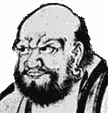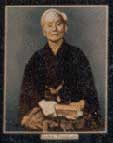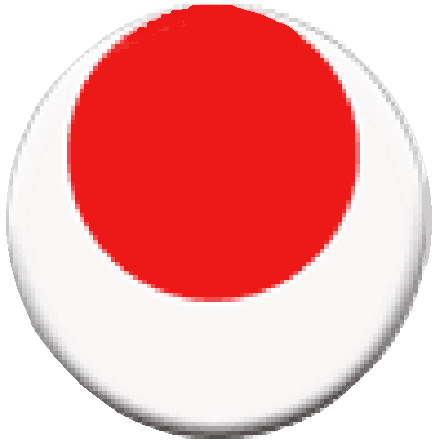|
|
|
 |
There are no known written
records about the origins of the martial art known as karate-do.
It is known however that it came to Okinawa from China. The
origins of this Chinese method of fighting is found in a discipline
set by the Indian monk Boddhidharma who is also known as Da
Mo in Chinese and Daruma Taishi in Japanese who set forth from
the western shores of India, (Kerala) to China, the destination
being the Shaolin Temple. Boddhidharma was well versed in Kalarippayattu
a martial art of South India, rich in Yogasans or Yogic Postures
that bring forth the union of the body and the mind. |
|
Boddhidharma who is considered the 28 patriach
in the tradition of Gautam Buddha and the first patriach of the Zen Sect
was surprised when he saw that the trainee monks could not withstand the
rigourous training necessary for his type of Buddhism. It was therefore
felt that in order for the monks to bear the rigours of travel, they needed
to not only have a healthy body and mind, but also learn to defend themselves
against both wild creatures as well as thieves and bandits. Boddhidarma's
task was therefore to shape them up. The method that he set for the monks
is laid down in the Ekkin Sutra of the Dhamapada or the holy scriptures
of Buddhism. By conjecture we understand that the martial arts of the
Shaolin Monastery also spread with Buddhism along the silk route with
the merchants of China, many of whom also learnt the art from the monks.
Amongst the regions where Buddhism spread
were the Ryukyu Islands, a group of Islands now called Okinawa which is
off the coast of Japan and
where Chinese influence through trade and culture was the greatest. Okinawa
originally consisted of the small kingdoms of Chuzan, Nanzan & Hokuzan.
Being unified by king Sho Hashi of Chuzan in 1429 a prohibitory order
was issued banning all Ryu Kyuans from possessing weapons. A similar order
was also promulgated in 1609 by Shizuma of the Satsuma clan of Kageshima
after they gained control of Okinawa. Therefore the only method of self
defence was the method called To-te or Hand of Chinese origin, which was as yet unknown
to the mainland Japan and hence practiced secretly. I n the Ryukyu Islands this martial art underwent
great developement especially
the provinces
of Shuri, Naha and Tomari. In Okinawa
it became Okinawa-te.
Upon coming to know about this
art, the rulers from mainland Japan banned it's practice, It is because
of these bans that the art got it's mystique and legends of great karate
warriors were born. Since it could not be learned legally there were no
dojos nor any professional instructors. The only ones who taught the art
did so because of their interest in it and accepted a few students in
secret. There was therefore no emphasis on written descriptions of techniques.
The arts took on
a local hue and came to be known as Shuri-te, Naha-te and Tomari-te after
the provinces.
 |
| The calligraphy for Bushi Do or the Way of the Warrior |
|
 |
Supreme Master Gichin Funakoshi
often considered as the father of Modern Day Karate was born
into a Samurai Family in 1868. He was very weak as a child and
to improve his health his father took him to Azato Yasutsune
a good friend who knewthe martial arts. During Funakoshi's childhood
the art was banned and at first he was Azato's only student.He
trained under both Azato and Itoso Yasutsune who were great
warriors. Years later he also trained under a great many other
Senseis like Piechin Kiyuna,Niigaki and Sokon Mastumura. With
the martial art training Master Funakoshi's health not only
improved but he became a very adept martial artist. and by the
time he completed his education and became a teacher himself,
Master Funakoshi was appointed Chairman of Shobukai the Martial
Arts Association of Okinawa. |
|
Over
the years exponents from both Shuri- te and Tomari-te developed their
own schools to the extent that one could see the concievable differences
with the art practiced in the Naha prefecture. The Shuri and Tomari
schools keeping more to the hardline training methods became known
as Shorin- ryu. The school being named after the place of the monks who
brought the art to Okinawa viz Shaolin temple. Not to be outdone by their
compatriots from Shuri and Tomari, the exponents from Naha called their
school - Shorei ryu or the school of the Enlighten Spirit
It was only in 1902 when Shintaro Ogawa the commissioner of schools in
the Kagoshima Prefecture after witnessing an exhibition of Karate, submitted
a report to the Ministry of Education in Japan about the benefits of the
training in karate, that Karate became a part of the curriculum in schools
and began to be practiced freely in Japan. The martial art gained tremendous
popularity after Master Funakohi performed in Okinawa before the Crown
Prince of Japan in 1922. This exhibition of the empty handed art of fighting
led to him being invited to perform at the Royal Court in Japan. The response
to his demonstration in Japan was so great that he was persuaded to stay
on in Mainland Japan. Amongst those who persuaded him to stay on was Master
Jigoro Kano the founder of Judo who gave him the necessary help to teach
the art for the first time in Japan.
In his early days in Tokyo, Japan, he stayed
at a dormitory for Okninawan students living in a small room by the entrance.
His humble charectar could be as he would clean the place while the students
attended class during the day and he would instruct them in Karate-do
in the evening.
It
was in Japan when Master Funakoshi was leading a students group doing
research on karate at the Keio University when he proposed the change
of name in order to make the art totally Japanese in nature. In the proposal
he gave the name 'Dai Nippon Kempo Karate-do or Great Japan
Fist Method Empty Hand Way. In the new name he changed the Calligraphy
symbolising "to" or "China". (This charectar can also be pronounced
as kara) to "Kara" or Empty and thus gave the art the name of Kara-te-do
in short.
|
Calligraphy used ealier |
 |
Pronounced as "TO".
This calligraphic
charectar could also be pronounced as "KARA" |
Calligraphy symbolized 'China' |
|
Calligraphy now used |
 |
Pronounced as "KARA"
This calligraphy is
also pronounced
as "Ku" |
Calligraphy symbolized 'Empty |
|
The popularity
of the art soon led to many masters from Okinawa coming to the mainland
and setting up their own schools. Various masters like Chogun Miyagi (Goju
ryu) Kenwa Mabuni (Shito ryu) propogating their own style also came to
mainland Japan and their presence soon led to the formation of organizations based on different teaching methods.
In Japan today although four major schools of karate-do are prevalent, namely Shotokan,
Wado-ryu, Goju Ryu and Shito Ryu, the most popular style or school is still Shotokan with the JKA being the foremost among the all the Orgainizations. |





